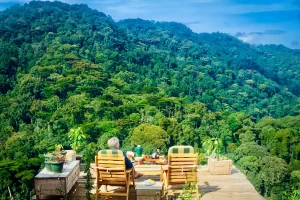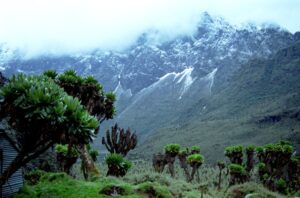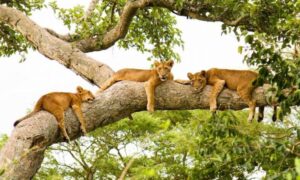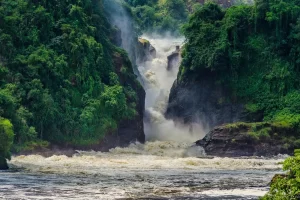Heads of State and leaders from 120 countries across the world have converged in Uganda for the 19th Summit of the Non-Aligned Movement (NAM) that kicked off on Monday, January 15, 2024.
The summit is one of the biggest global meetings Uganda is hosting after the 2007 Commonwealth Heads of Government Meeting. Uganda has also taken over the chairmanship of NAM from Azerbaijan until 2027.
The delegates of the Non-Aligned Movement (NAM) Summit should not only sit in various meetings at Speke Resort Munyonyo and go back to their home countries without visiting different sites in Uganda. Touring Uganda will give them a feel of the Flora and Fauna, sights, and sounds, and allow them to interact with the loving people of Uganda.
It is no secret that Uganda has beautiful scenery, which is why it is called the pearl of Africa. Why jet into the country and miss out on experiencing this beautiful country?
Uganda is known for its rich and diverse natural beauty, including national parks, wildlife reserves, and stunning landscapes. Visiting these sites would allow the leaders to experience and appreciate Uganda’s ecological diversity.
Bwindi Impenetrable National Park is located in the southwestern part of Uganda, on the rim of the Rift Valley. It is one of the oldest and most biologically varied rain forests in Uganda, comprising about 400 varied plant species. The impenetrable forest protects about 320 predicted populations of mountain gorillas—approximately half of the population in the world—among which are a number of habituated groups that can be tracked by visitors.

Rwenzori Mountains, known as the Mountains of the Moon, are found in western Uganda along the Uganda-Congo border. At the peak of the mountain, it is probably the only place in Uganda that has snow. The equatorial snow peaks include the third highest point in Africa, while the lower slopes are blanketed in moorland, bamboo, and rich moist forest.

Queen Elizabeth National Park is the most popular savanna park in Uganda and the best place to see lions, including tree-climbing lions. It prides itself on a great diversity of habitats that include lakes, savannah grasslands, forests, and wetlands that serve as home to the biggest variety of large mammals in the country.

Murchison Falls National Park is situated at the end of the Albertine Rift Valley and is Uganda’s oldest and largest safari park. It is home to 76 different mammal species and 451 birds. Murchison Falls provides one of Uganda’s most remarkable wildlife spectacles that can only be experienced through Ugandan safaris, tours, or trips. Regular visitors to the riverbanks include elephants, giraffes, and buffaloes, while hippos, crocodiles, and aquatic birds are permanent residents.

During the stay of Heads of State in Uganda, they should visit the astonishingly majestic treasure in Buhweju district, known as the Mukazi Anyara River, nestled in the district’s heart. This has been attributed to the beauty and endowment of Ugandan women. The river is surrounded by greenery, towering trees, and vibrant flowers that give a sense of tranquilly, allowing one to reconnect with nature and experience its soothing embrace.

Semuliki National Park in Uganda perfectly combines the ecosystems of Eastern Africa with those of Central Africa. This makes it a home for animals from both sides of the continent. Semuliki is also known for its hot springs (male and female), which are believed to have many healing powers for the locals.

Islands in Kalangala District; The district is entirely made up of 84 islands widely scattered in Lake Victoria over a total area of 9,066.8 sq. km, of which 432.1 sq. km (4.8%) is land and the rest is water mass. Kalangala attracts tourists due to its uncountable beaches, hence providing memorable holidays and vacations. Besides tourism, the islands are also rich lands with fertile soils, a plentiful water supply, and natural tropical forests.

Uganda Martrys Shrine; I am sure the Heads of State have heard about the Uganda Martyrs Shrines that were constructed in commemoration of the 22 Catholic martyrs and 23 Anglican martyrs that were killed between 1885 and 1887 by the King of Buganda, Kabaka Mwanga 11. Thousands of Pilgrims trek from different parts of the world to commemorate the faith exhibited by martyrs, who were executed between January 31, 1885, and January 27, 1887.

These are some of the many sites in Uganda, and by visiting them, NAM Summit delegates will gain a deeper understanding of the country’s natural and cultural heritage, promote sustainable development and conservation efforts, engage in diplomatic exchange, and explore potential economic opportunities, all of which are in line with the goals and spirit of the Non-Aligned Movement.
NAM is the second-largest group of countries after the United Nations, founded in 1961 at the height of the Cold War between the West and East. Unlike other regional and international organizations, it has neither a formal founding charter, act, or treaty nor a permanent secretariat.















